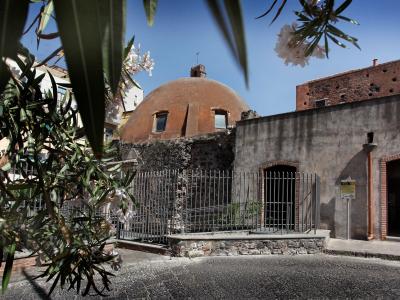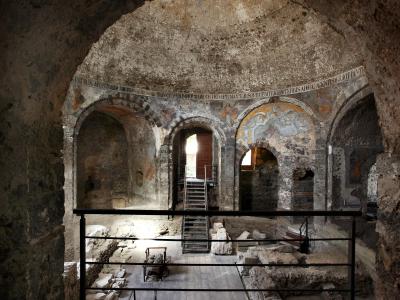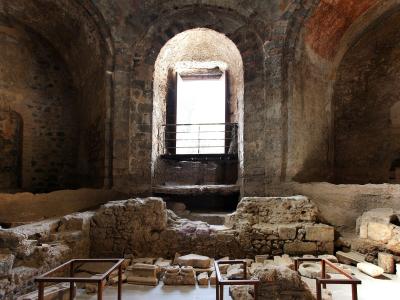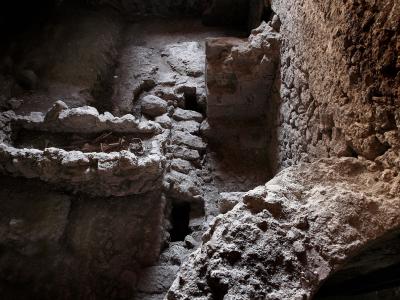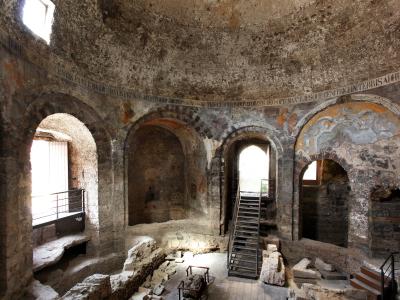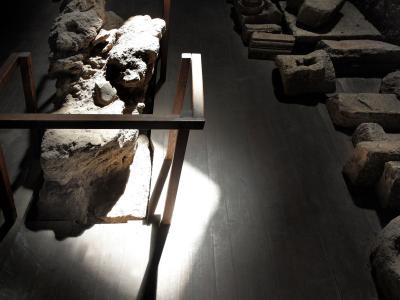An incredible number of stratifications characterize this monumental complex that was born as a thermal environment of the Roman era. After being believed to be a pagan Pantheon, and the first Christian Marian temple, it would have been consecrated in 44 AD, the Prince of Biscari was the first to formulate the hypothesis that this round building was & nbsp; originally part of a larger & nbsp; thermal complex that extended up to today's Piazza Dante. La Rotonda, with the Bonajuto chapel, & nbsp; represents one of the rare traces of Byzantine Catania. Starting from the 6th century, the circular hall was transformed into a Christian basilica which took the name of Basilica of Santa Maria della Rotonda. The south entrance portal dating back to the 1500s is in limestone & nbsp; while the one to the west, made of lava stone, and dating back to the 13th century, is in the Gothic style. The hall in the center, with apse, & nbsp; it is covered by a round dome and on the walls of the circular room there are also round arches which served as chapels. The bombings of the Second World War damaged the basilica and in the 1950s restoration work was carried out to remedy the original building from the Roman era. This intent caused the loss of some precious frescoes. In the first decade of this century, other excavations were undertaken which brought to light numerous medieval tombs and other rooms belonging to the thermal baths. & Nbsp;
& nbsp;
Map
TERME ROMANE DELLA "ROTONDA"
Via della Mecca, 95124 Catania CT





